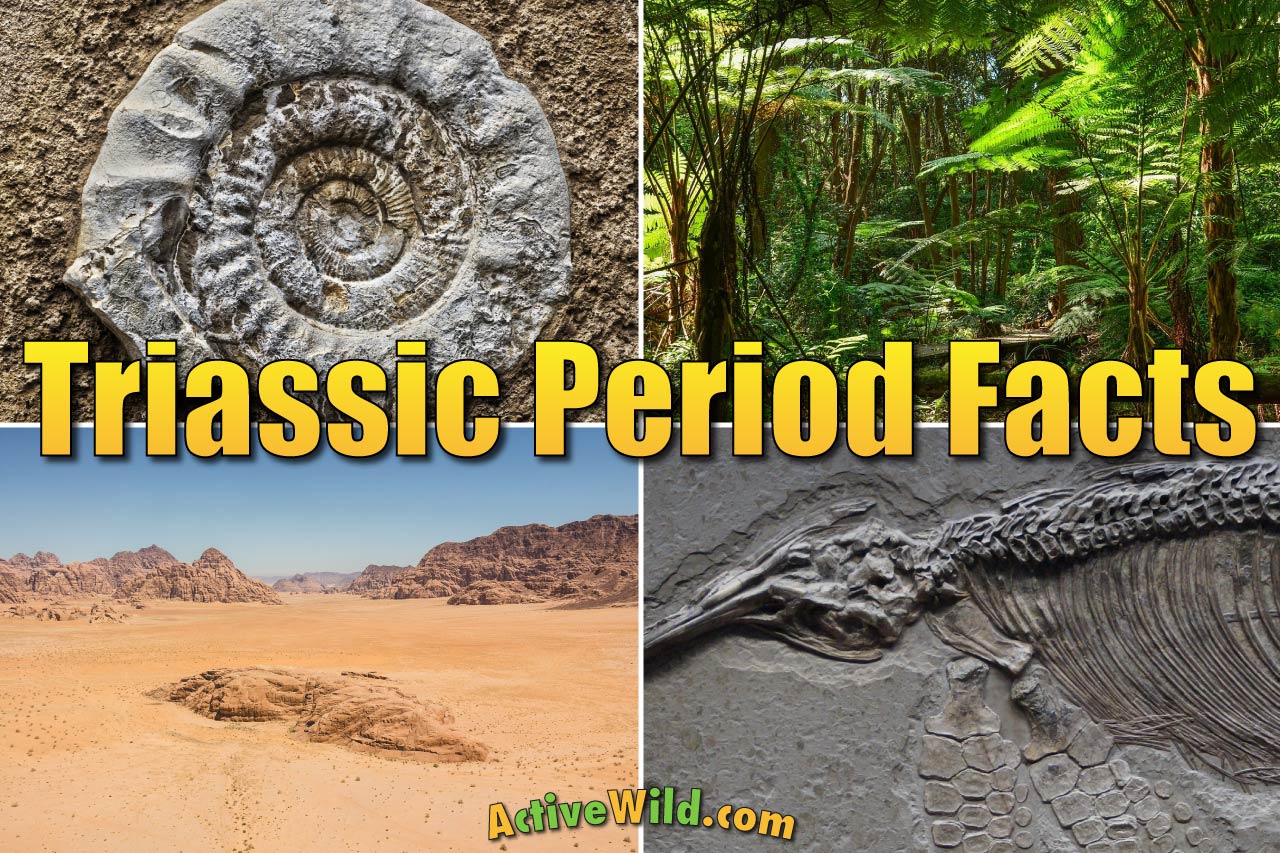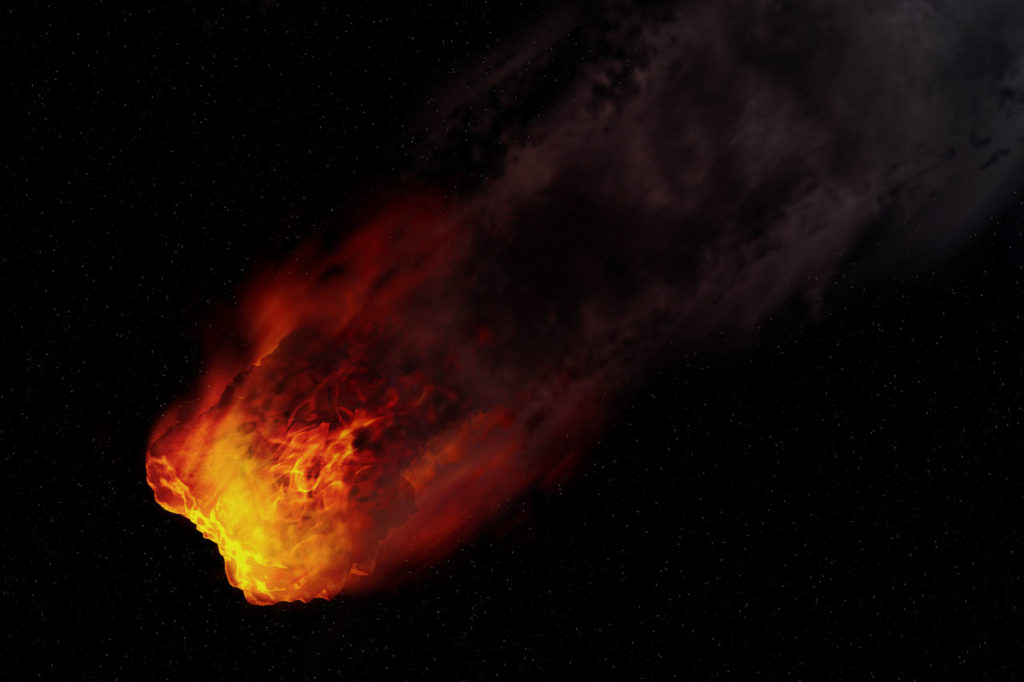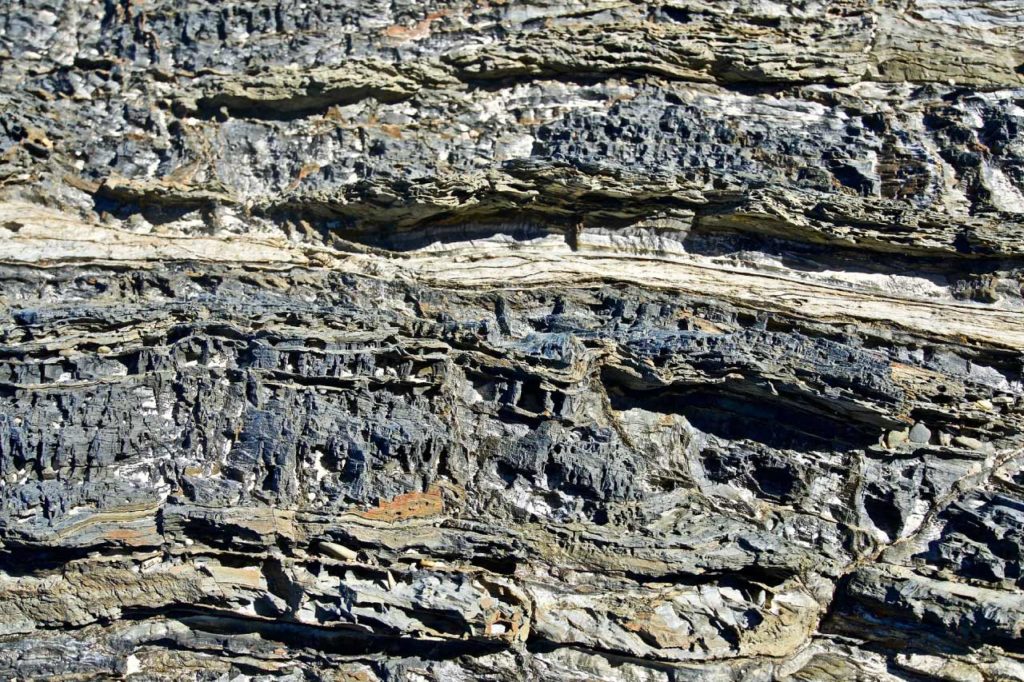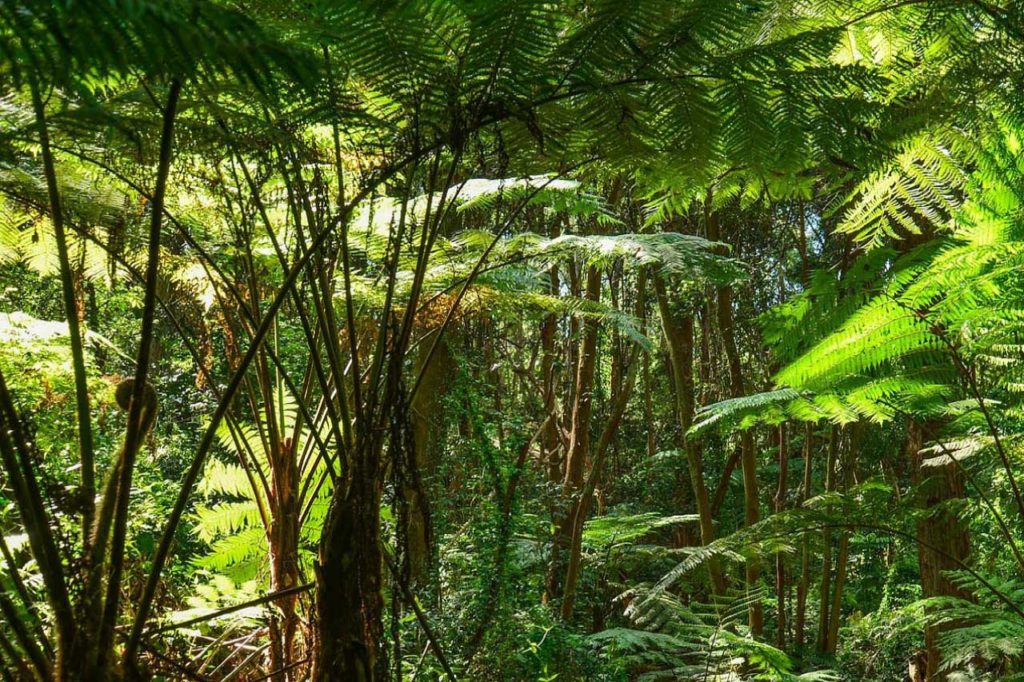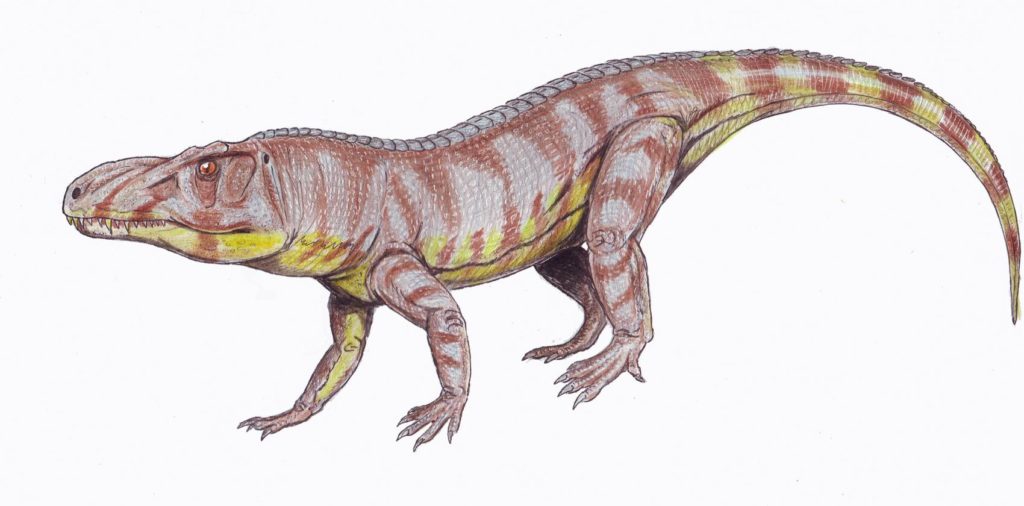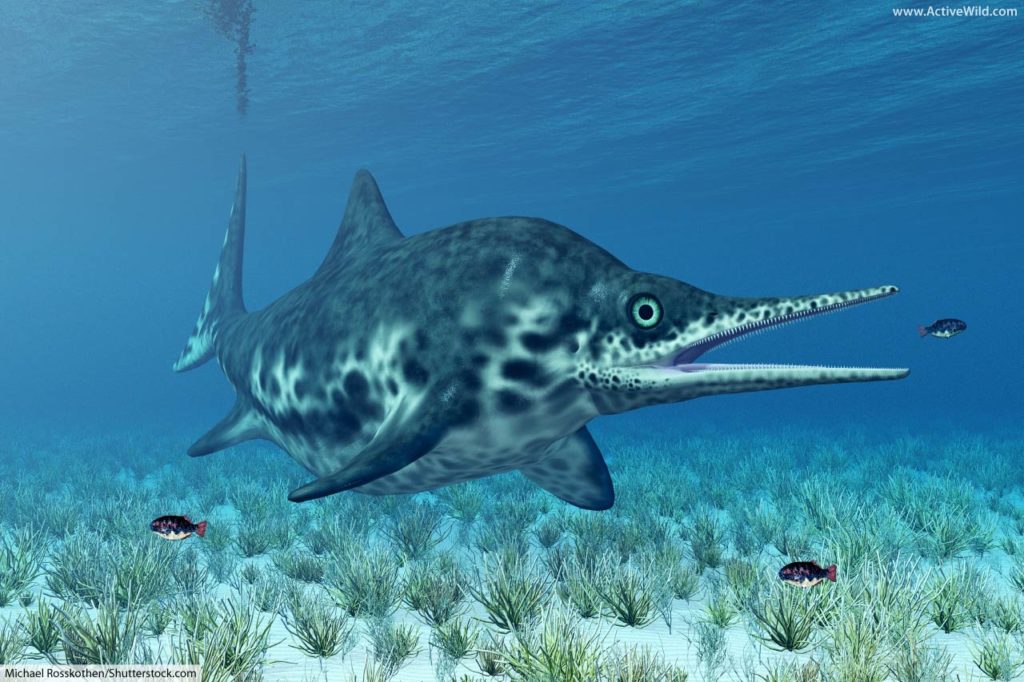The Triassic Period: facts, geography, climate, plants and animals. The ultimate guide to the first period of the Mesozoic Era.
The Triassic Period: Introduction
The Triassic Period is a period of time in the geologic timescale; the first of the three periods of the Mesozoic Era.
Although the Triassic Period is best known for the appearance of the dinosaurs, they wouldn’t achieve dominance until the Jurassic Period. Instead, the Triassic Period was a time in which other reptile groups would thrive.
The Triassic Period saw the appearance of the huge flying reptiles known as pterosaurs, fearsome crocodile-like reptiles called pseudosuchians, and giant marine reptiles in the shape of ichthyosaurs and plesiosaurs.
tiles.
However, scurrying between the feet of the pseudosuchians and early dinosaurs were a group of small therapsids with characteristics you may recognize: they had hair, they were warm-blooded, and they gave birth to live young which they fed with milk. They were the first of the true mammals – the ancestors not only of the cats, dogs, whales and rodents of today, but also of you and me!
Insects had appeared millions of years previously, but during the Triassic they continued to evolve, with various familiar groups such as flies and grasshoppers making their first appearances.
On this page you’ll find out what the Triassic Period is, when it occurred, what the geography and climate was like and which animals and plants lived during the period…
Page Index
- The Triassic Period: Introduction
- Top 10 Triassic Period Facts
- Mass Extinctions in the Triassic Period
- When Was The Triassic Period?
- Epochs of the Triassic Period
- Continents in the Triassic Period
- Climate in the Triassic Period
- Life in the Triassic Period
- Plants in the Triassic Period
- Non dinosaur Animals in the Triassic Period
- Triassic Amphibians
- Therapsids & Triassic Mammals
- Triassic Non-Dinosaur Reptiles
- Pterosaurs
- Triassic Insects
- Dinosaurs in the Triassic Period
- Triassic Sea Animals
- Plesiosaurs
- Other Marine Reptiles
- Other Dinosaur Pages on Active Wild
Love Dinosaurs? Check Out These Pages Next!
- Jurassic Period: The Ultimate Guide
- Cretaceous Period: The Ultimate Guide
- Triassic Dinosaurs
- Main Dinosaur Page
- Dinosaur Books
- Dinosaur DVDs
- Dinosaur Toys & Gifts
Top 10 Triassic Period Facts
- The Triassic Period is a period of time in the geologic time scale (a way of dating events on Earth based on the rocks formed during that time).
- The Triassic Period began 251.9 million years ago (Mya), at the end of the Permian Period. It ended 201.3 Mya with the start of the Jurassic Period.
- The Triassic Period lasted around 50.6 million years.
- It is the first period of the Mesozoic Era.
- The Triassic Period is named after three distinctive different rock layers found across north-western Europe. Collectively they are known as the 'Trias'.
- The major extinction that preceded the Triassic Period is often referred to as 'The Great Dying'. 90% of all species became extinct during the Great Dying.
- The Triassic period is perhaps best-known for the appearance of the dinosaurs!
- The first true mammals also appeared during this period.
- During the Triassic Period there was just one continent. This huge landmass was named Pangea.
- The red sandstones formed before Pangaea split up can today be found as far apart as North America and Africa. They contain the best fossils from the Triassic Period.
Mass Extinctions in the Triassic Period
The beginning of the Triassic Period was a desolate time for Earth. Around 90% of the planet’s species had recently been wiped out by a mass extinction event that marked the end of the Permian Period.
So extensive was the loss of species that the extinction event has come to be known as ‘The Great Dying’. Possible causes for the Great Dying include: a dramatic climate change triggered by huge volcanic explosions, large releases of greenhouse gases from the sea bed, or a meteor impact.
The Permian-Triassic extinction event was more severe than the Cretaceous-Paleogene Extinction Event which would, millions of years later, cause the extinction of the dinosaurs.
The early Triassic Period was a time of recovery for Earth’s plants and animals. Scientists believe that it may have taken up to ten million years for Earth to fully recover from the mass extinction.
The Triassic Period ended as it had begun, with a mass extinction event. Again, scientists are unsure as to its exact cause. Possible explanations include volcanic eruptions or a meteor strike. The Triassic-Jurassic Extinction Event saw the loss of over half of the species known to be living at the time.
When Was The Triassic Period?
The Triassic Period began 251.9 million years ago (Mya) and ended 201.3 Mya. It lasted for around 50.6 million years.
The Triassic Period was the first period of the Mesozoic Era. (Just as days can be divided into hours, eras can be divided into periods. However, unlike hours, periods aren’t all the same length.)
The period immediately before the Triassic Period was the Permian Period. The Permian Period was the last period of the Paleozoic Era.
The Triassic Period was followed by the Jurassic period (199.6 – 135.5 Mya) which was the second period of the Mesozoic Era. (The three periods of the Mesozoic Era are the Triassic, Jurassic and Cretaceous Periods.)
Triassic Epochs
The Triassic Period can itself be divided into 3 parts, known as ‘epochs’. These are the Early Triassic, Middle Triassic and Late Triassic.
Each epoch corresponds to the layer of rock that formed during that time. This means that the Early, Middle and Late Triassic can also be named the Lower, Middle and Upper Triassic because the newer rocks of the Upper (Late) Triassic were formed above the older rocks of the Lower (Early) Triassic.
Epochs of the Triassic Period
- Lower/Early Triassic: 251.902 to 247.2 Mya
- Middle Triassic: 247.2 to 237 Mya
- Upper/Late Triassic: 237 to 201.3 Mya
Continents in the Triassic Period
Throughout the Triassic Period there was just one continent: a huge, 'C-shaped’ supercontinent known as Pangea (also spelt Pangaea). The name Pangea means ‘whole Earth’. This name is fitting, because Pangaea stretched from pole to pole, with the equator running through its center.
Pangea was surrounded by the Panthalassic Ocean. This vast sea covered almost 70% of Earth’s surface.
In the center of Pangea was a huge, inhospitable desert. Most Triassic life was found around the edge of the supercontinent, away from the dry, desert interior.
Climate in the Triassic Period
The climate in the Triassic Period was very much hotter than it is today. The high amount of carbon dioxide present in the atmosphere would have led to a strong greenhouse effect, causing heat to be directed back towards Earth.
The average global temperature at the beginning of the Triassic Period was almost 30°C / 86°F (the average for the 20th century was 13.7°C / 56.7°F). The Triassic climate only began to cool slightly towards the end of the period.
With just one continent, the Panthalassic Ocean was unhindered by land throughout most of its area. This meant that warm currents from the Equator were able to travel freely to the poles.
As a result, Earth’s polar regions would have been warm during the summer and only slightly below freezing during the winter. During the Triassic Period, forests would have grown at the North and South Poles, and the polar climate would have been too warm for polar ice caps to form.
Very little humidity from the ocean reached the interior of Pangea. This would have resulted in a dry, scorching hot central desert region that experienced little or no rainfall.
The supercontinent’s edges would only have been marginally cooler, with high humidity.
Pangea spanned the Equator and its north and south halves would therefore have been at different seasons and different temperatures throughout the year. This would have caused a monsoon climate, with strong winds rushing across the continent and periods of intense rainfall in areas away from the dry interior.
Such was the severity of the monsoons on Pangea that geologists have dubbed them ‘Pangean megamonsoons’.
Life in the Triassic Period
Although much of Pangea was barren desert, the edges and poles of the supercontinent were able to support many forms of life.
The most famous land animals to appear during the Triassic Period were the dinosaurs. However, it would take many millions of years of evolution and an extinction event before the dinosaurs were able to become the dominant land animals.
During the Triassic Period, many other types of animals and plants thrived.
Plants in the Triassic Period
Away from the desert interior of Pangea, many plants were able to grow despite the hot, humid conditions.
Seed plants such as cycads, ginkgoes, conifers and seed ferns thrived during the Triassic period. In the north, conifers were dominant, with forests springing up in the northern polar region.
In the south the seed fern Glossopteris was the dominant tree.
Tree ferns and horsetails also flourished.
Non-dinosaur Animals in the Triassic Period
Triassic Amphibians
The amphibians had already begun to lose out to the reptiles in the Permian Period. They also fared badly in the Permian – Jurassic Extinction Event. However, some amphibian groups flourished in the Triassic Period.
Triadobatrachus, a genus of early frog, lived in what is now Madagascar during the Early Triassic. Although it is the earliest frog-type animal yet discovered, scientists think that frogs may have split from salamanders even earlier, in the Permian Period.
Therapsids & Triassic Mammals
The therapsids, a group of animals that included the ancestors of mammals, suffered a major setback in the extinction event at the end of the Permian, with most becoming extinct.
However, not all therapsids perished, and those that survived became the dominant land vertebrates during the Early Triassic.
A group of therapsids called dicynodonts were heavily-built, medium to large animals with two tusks. These herbivorous animals lived in herds, and were the ecological equivalents of today’s cattle. Dicynodonts were found all around Pangea.
The first mammals were small, nocturnal, burrowing animals. They were likely to have had nocturnal lifestyles. Being warm-blooded, they were able to remain active even in the nights – unlike their reptilian competitors.
An example of an early mammal-like animal is the Eozostrodon. It looked like a large shrew and was around 10 cm (3.9 in) in length. It was found in what is now England.
A similar animal (some scientists regard it as being the same species) was the Morganucodon, also found in Britain.
Triassic Non-Dinosaur Reptiles
The position of the synapsids as dominant land vertebrates was taken over by the archosaurs – a group of reptiles which, in the Early Triassic, would split into two groups: Pseudosuchia – early crocodile-like animals, and Avemetatarsalia – the group that would eventually become dinosaurs.
Most pseudosuchians had long, crocodile-like bodies, long tails, and large, heavily-built heads. Some walked with lizard-like sprawled legs, but others had legs that emerged from under their bodies, allowing them to become larger and heavier.
Not all pseudosuchians were meat-eaters. Some, such as the aetosaurs, were herbivorous. These large, heavily armored prehistoric reptiles were found in many parts of Pangea.
The triassic also saw the appearance of the first turtles. Specimens of Odontochelys semitestacea – a 220 million year old early turtle – were found in China.
The earliest-known squamate (a member of Squamata, the group of animals that includes lizards and snakes) is Megachirella. It lived in the Middle Triassic and was a 15 cm (5.9 in) long lizard-like animal. It is thought that the first squamates appeared in the Early Triassic.
Pterosaurs
Although gliding reptiles are known to have lived in the Permian Period, it was only in the Late Triassic that flying reptiles – in the shape of the Pterosaurs – appeared.
Early pterosaurs, such as eudimorphodon, lived on cliffs and ate fish. Others, such as peteinosaurus, may have eaten insects.
Triassic Insects
30% of all insects had been wiped out by the mass extinction at the start of the Triassic Period. During the course of the Triassic Period, several familiar insect groups appeared, including the Diptera (true flies), the Hymenoptera (a group of insects which would eventually become today’s wasps, ants and bees), Lepidoptera (butterflies and moths), crickets and grasshoppers.
Insects such as beetles and early dragonflies had appeared before the Triassic, and continued to evolve throughout the period.
Spiders had also been around long before the Triassic, but during this periods two main groups of spider – the Mesothelae and Opisthothelae – first appeared.
Animals such as scorpions, centipedes and millipedes had appeared many millions of years earlier, and continued to play their parts in Triassic ecosystems.
Dinosaurs in the Triassic Period
The first dinosaurs appeared between 240 and 230 million years ago in the Middle Triassic. They were small, carnivorous animals that walked on two legs.
Unlike those of most other reptiles, the legs of dinosaurs pointed straight down from the base of the body, rather than emerging at an angle. This allowed dinosaurs to grow to large sizes while expending less energy when moving around, giving them a competitive edge over their reptilian rivals.
At some point in the Mesozoic Era the dinosaurs split into two main branches: Saurischia and Ornithischia. Although the split may have occurred in the Late Triassic, very few definite Ornithischian specimens have been found from this period.
The saurischians were characterized by their lizard-like hip structure, while the ornithischians had bird-like hips. (Confusingly, it is the lizard-hipped saurischians that are the ancestors of all birds). Saurischians were either carnivorous or herbivorous, whereas ornithischians were herbivorous.
Coelophysis specimens have been found in North America and southern Africa. It is one of the most commonly-found dinosaurs, with hundreds of specimens having been found.
Sauropodomorphs – a group of herbivorous saurischian dinosaurs – appeared in the Triassic Period. Their descendants would include some of the largest of all dinosaurs, including giants such as Brachiosaurus and Argentinosaurus.
Plateosaurus was an 8m (26ft.) Sauropodomorph plant eater that lived in herds in what is now Europe.
- You can discover more Triassic dinosaurs here: Triassic Dinosaurs List with Pictures & Facts
Triassic Sea Animals
The Triassic ocean, despite being far hotter than today’s oceans, held many forms of life.
Marine life had changed dramatically following the extinctions of the Permian Period, in which 95% of marine species had been wiped out by the sharp rise in the level of carbon dioxide in the water.
Ammonites, mollusks and sea urchins are among the few sea animals to have survived the Great Dying.
During the Triassic Period, new corals appeared and reefs developed in the shallow water that surrounded Pangaea.
Crustaceans had been around for millions of years before the start of the Triassic, but the period saw the appearance of the first prawns.
There is very little variety in Triassic fish fossils. This suggests that there were few different types of fish present in the oceans. However, the Triassic Period did see the appearance of a group of fish that today accounts for 96% of the world’s fish species: the teleosts. Unlike other fish, teleosts have mouthparts that can be extended in order to draw food into the mouth.
The Triassic oceans were home not only to fish, but also to marine reptiles, some of which grew to huge sizes.
Early in the Triassic Period a group of marine reptiles called ichthyosaurs appeared, having evolved from a group of land reptiles that had returned to the sea. (This is very similar to the way in which whales and dolphins would later evolve from land mammals.)
The early ichthyosaurs were lizard-like in appearance. Close examination of their vertebrae has revealed that when they swam they used their whole body to propel themselves through the water.
By the Middle Triassic the ichthyosaurs had evolved into more fish-like forms. Instead of moving their whole bodies to propel themselves through the water, they now used their tails. By the Late Triassic Ichthyosaurs had become abundant.
One genus of ichthyosaur – Shonisaurus – contained some of the largest marine reptiles ever to have lived. Shonisaurus popularis grew to 15 meters (50 feet) long.
Shonisaurus sikanniensis surpassed even this, reaching lengths of up to 21 m (69 ft.), making it the largest known marine reptile. (The species is sometimes placed in the genus Shastasaurus.)
Plesiosaurs
Another group of marine reptiles appeared during the Late Triassic. They had long necks, small heads, and instead of legs had four pointed flippers. They were the plesiosaurs; their descendants would become the dominant predators of the Jurassic Oceans.
Plesiosaurs in the Triassic Period were numerous but not as large as they would be in the Jurassic Period.
Other Marine Reptiles
Other Triassic marine reptiles included pachypleurosaurs, nothosaurs and placodonts. All were small to mid-sized lizard-like animals.
We hope that you enjoyed discovering the amazing Triassic Period facts on this page. Now that you're a triassic period expert, check out these other dinosaur-related pages...

